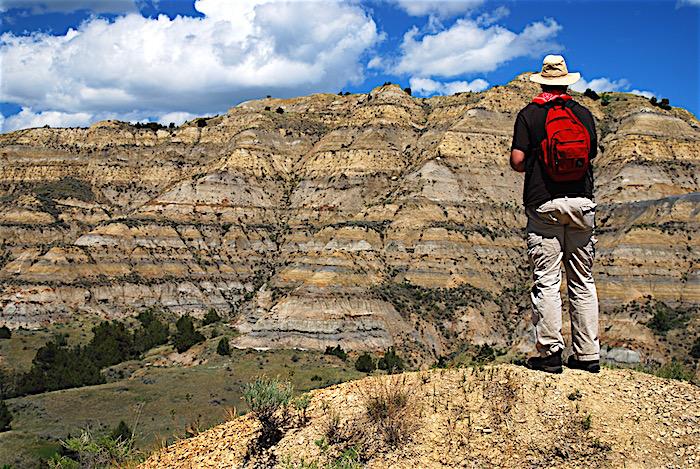
While Verizon Wireless will have its cell phone equipment on a new communication tower at Theodore Roosevelt National Park, the signal will not bleed into the park's officially designated wilderness/Kurt Repanshek file photo
A new communication tower is going up at the North Unit of Theodore Roosevelt National Park in North Dakota, and while Verizon Wireless will have equipment on the tower, it has been designed not to bleed a cell signal into official wilderness in the park.
The issue of a signal bleed was raised last fall by Public Employees for Environmental Responsibility, which worried that Verizon's signal from the tower would "blanket designated wilderness with cell phone coverage."
National Park Service staff recently issued a Final Environmental Assessment and Finding of No Significant Impact for the tower, which is a replacement. The current tower provides communication functions essential to public safety and efficient operations for the park and the U.S. Forest Service. The NPS will issue Verizon Wireless a right-of-way permit to co-locate their cellular equipment and replace the existing NPS communications tower northeast of the park entrance and east of U.S. 85.
Verizon Wireless initially proposed construction of a cellular communication tower on private lands near the park’s existing communication tower. The NPS and Verizon Wireless have determined that only one tower is needed to provide radio service to the NPS and USFS while providing cellular service for the U.S. 85 corridor. The new 190-foot high guyed tower will replace the existing 220 foot high guyed tower, eliminating the need for aviation safety lighting. Verizon Wireless will co-locate its telecommunications equipment on the tower and construct a slightly larger support shed to accommodate NPS, USFS, and Verizon equipment.
Park managers have successfully collaborated with companies in western North Dakota to reduce impacts to scenery, dark night skies, and natural sound.
“Verizon Wireless cooperated with the park to address concerns raised with the company’s proposal for installation of an additional communication tower near the park,” said Superintendent Wendy Ross. “The company’s willingness to work with the park in reducing light pollution and tower proliferation improves the North Unit visitor experience.”
Public comments during the EA review raised concerns about cellular phone service bleeding into designated wilderness areas, creating potential cell phone use conflicts between wilderness users. In response to these concerns, Verizon Wireless cellular equipment will only target the U.S. 85 corridor and will not provide additional cell service in designated wilderness areas.
The FONSI establishes that there would be no significant impact on the environment as a result of the selected action. The Final EA and the FONSI will be available through the NPS Planning



Comments
ecbuck,
If you bothered to read my first post, I mentioned the precautionary principle. Look it up.
I was thinking we were just concerned about wilderness areas. Under that scenario, my simile is not flawed.
I thought we we concerned with radio waves. If not what are you being cautious about? Sounds to me that you would like to have all human activity come to a halt because of the precautionary principle.
Yes, RF energy in wilderness areas, that is the topic.
Hey, thanks you guys!
You just helped me solve a mystery that has really been bugging me for a couple of months now. Ever since I started wearing a new pair of eyeglasses, I've been hearing voices.
I thought I was just hallucinating again. But now I know that the fake gold rims and earpieces are picking up cell phone conversations from those RF waves.
What a relief! Now if I can just figure out how to tap into them so I can transmit, I'll be able to cancel my Verizon account and save a lot of money every month.
I wonder if I can get TV for free, too?
So, Argalite, what is your concern with RF energy in Wilderness areas?